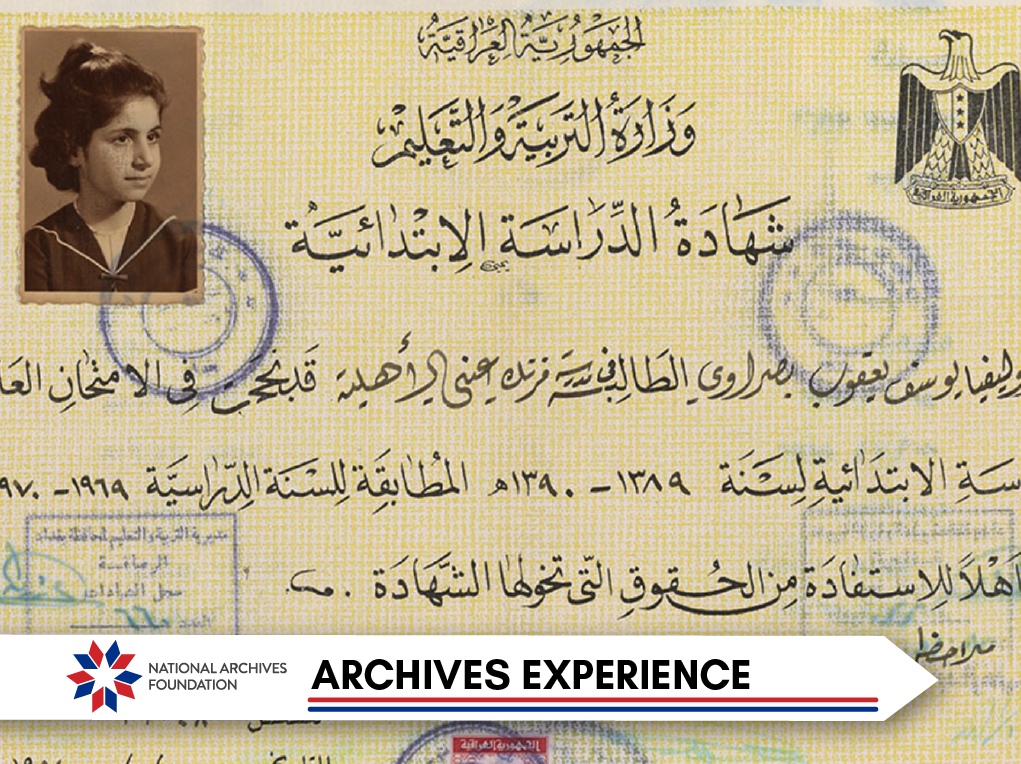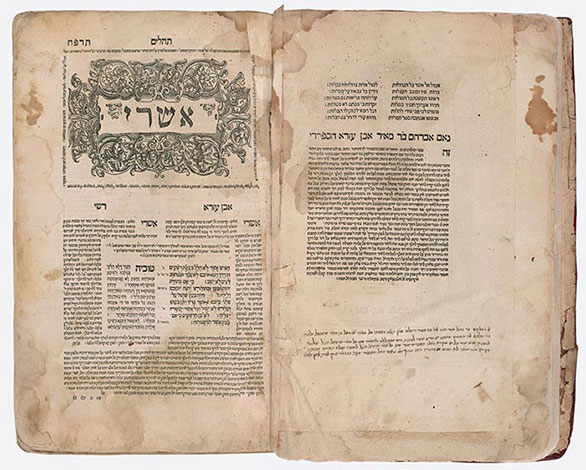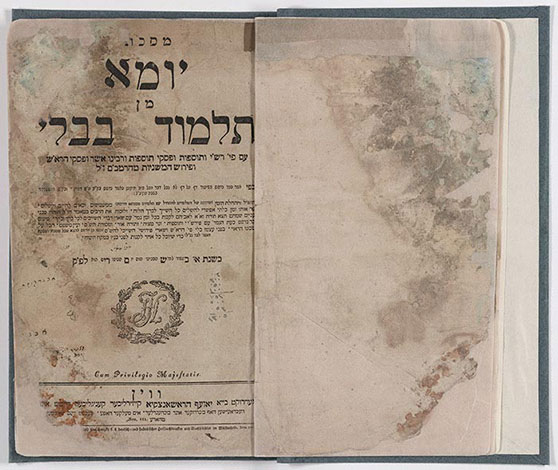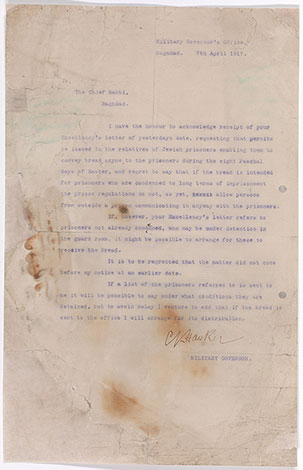Archives Experience Newsletter - May 9, 2023
Ancient Communities, Modern Preservation
In 2003, American forces entered Baghdad on a search mission. But after they found thousands of documents in a flooded basement, their search quickly turned into a rescue, and the National Archives was called to help.
Even in the midst of conflict, the team at the National Archives committed to preserving the history and culture of a community that much of the world didn’t know existed. Safeguarding documents isn’t just about saving books and paper; it’s also about telling the stories of people who survived—and those who didn’t—even in the most harrowing circumstances.
This week, take a look at the archives of Iraq’s Jewish community that were preserved through international cooperation and the National Archives’ expertise…
In this issue
History Snack
Search and Rescue

Flooded basement of Saddam Hussein’s intelligence headquarters
The 16 American soldiers of Mobile Exploration Team Alpha were trained to search for chemical, nuclear, and biological weapons during the Iraq War that overthrew Saddam Hussein’s government. On May 6, 2003, the team entered Hussein’s intelligence headquarters, the Mukhabarat, in Baghdad. In the basement of the building, which was flooded with four feet of water, the team found a massive collection of books and documents related to the history of the Jewish community in Iraq.

Attempts at drying the documents outdoors
Given the heat and humidity in Baghdad and the water-soaked condition of the materials, their survival was in doubt. The transitional government of Iraq, the Coalition Provisional Authority, after consultation with National Archives and Records Administration staff in the U.S., had the collection moved to a freezer truck to stop mold from growing. NARA preservation experts flew to Baghdad in June 2003 to assess the situation and to help.

Metal packing trunks used to house documents

View of books and other documents inside metal trunks
Iraqi representatives agreed that given the seriousness of the situation and the limited resources available in Baghdad at that time, the best course of action was to ship the materials to NARA headquarters in the United States for conservation, cataloging, and exhibition.
Community Preservation
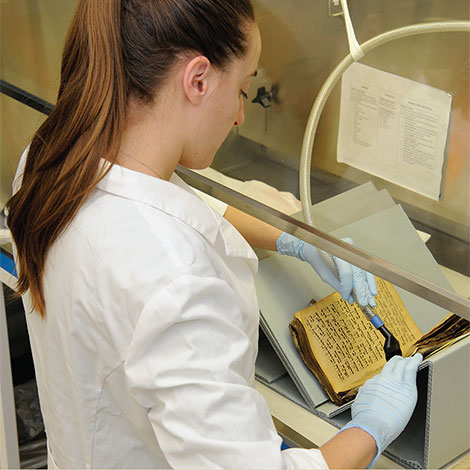
Mold removal
The operation to save the documents was a massive collaboration. The team from the National Archives worked with the government of the Republic of Iraq, the U.S. State Department, the National Endowment for the Humanities, the Center for Jewish History, the World Organization of Jews from Iraq, B’nai B’rith, the American Jewish Committee, and other organizations to determine the best path forward.
First, all the materials were vacuum-freeze-dried to stop further deterioration, and then the conservation team unpacked them and determined their condition. They examined each individual item, carefully assessed its condition, and wrote a report about it that was stored in an electronic database.

Digitization for future use and public access
A treatment plan was then created for each item that might, for example, include vacuuming away mold, repairing rips or tears in pages, and separating pages that were stuck together. A key mandate of modern conservation is that all treatments have to be reversible so that in the future, conservators are able to remove any enhancements such as repairs to the pages or restorations to the texts without damaging the documents.
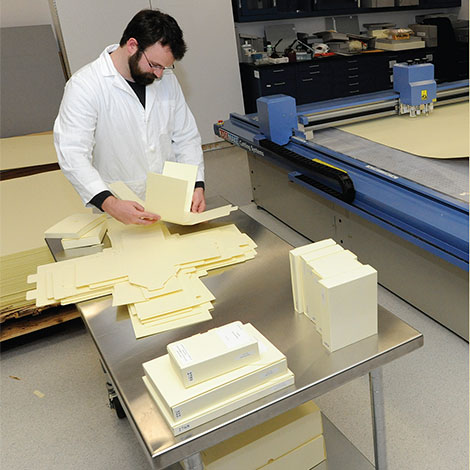
Building custom housing for documents and artifacts
After the treatments were completed, the team meticulously digitized each item, page by page, and posted them on a website dedicated to the project. The end goal was to allow the public to view the materials from anywhere they have internet access.
Once the items were digitized, the team members built custom boxes from materials suitable for permanent storage, and then they boxed up the collection and labeled each item in English and Arabic and/or Hebrew.

Map of ancient settlements in and around the Middle East and Mediterranean region
By the middle of the 20th century, Jewish people had been contributing members of Iraqi society for more than 2,600 years. The population of Iraq was predominantly Islamic, but it included substantial Christian, Jewish, and Kurdish minorities. Approximately 130,000 Jews lived in Iraq by 1949.
Jewish Life in Iraq
The restored objects themselves are testaments to Jewish life in Iraq, a story that many may find surprising. About a quarter of the 1,200 religious books found in the basement of the Mukhabarat were printed in Baghdad, but others were imported from abroad. Giovannidi Gara printed this volume of the Hebrew Bible in Venice during the late Renaissance. Rabbinic commentaries surround the biblical text. Personal items were also found, such as photographs of weddings and bar mitzvahs that captured highly personal and happy moments that people everywhere can identify with. In this letter, the president of the Jewish community of Baghdad asks Mr. King, the consul of the American embassy there, for help in getting priority for members of the Setty family, who were immigrating to the United States in 1947.
By the middle of the 20th century, when the Nazis took power in Germany, Jews in Iraq found themselves increasingly persecuted, as indeed they were the world over. The Jewish festival of Shavout celebrates the harvest and God’s gift of the 10 commandments to Moses on Mount Sinai. However, in 1941, a pro-Nazi government had come to power in Iraq. In June 1941, during Shavout, an anti-Jewish attack now known as the “Farhud” broke out. Many Jewish homes and businesses were looted and destroyed, and at least 180 Jews were killed and hundreds more were hurt. The riots ended the security the Jewish community had felt about living in Iraq once and for all.
After World War II ended, the Jewish state of Israel was established on May 14, 1948, and Iraq, Syria, Transjordan, and Egypt immediately launched the 1948 Arab-Israeli War against the new nation. At home in Iraq, Jews were arrested and imprisoned. That fall, the government executed an important Jewish leader for allegedly committing treason.
In the face of this persecution, Iraqi Jews fled in huge numbers, mostly to Israel but also to other welcoming nations, leaving behind most of their belongings and forfeiting their citizenship. Named for the Jewish prophets who led the Jewish people out of Babylon and back to Israel in the fifth century B.C., Operation Ezra and Nehemiah airlifted an estimated 120,000 Jews out of Iraq via Cyprus and Iran between mid-May 1951 and early 1952. When the airlift ended, only about 6,000 Jews remained in Iraq.
Stunned by the flight of its Jewish citizens, many of whom had held important positions in academia, the arts, and the professions, the monarchy of Iraq retaliated by freezing the assets of all the Jews who had left the country after 1948 and revoking their citizenship.
During this project, thousands of books, documents, and photos were recovered by the joint efforts between NARA, the Republic of Iraq, and so many more organizations and individuals. You can visit the entire online exhibit here.

View this post on Instagram
View this profile on Instagram




